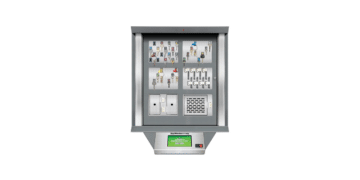Keeper Security has introduced two major privileged access capabilities now available in the Keeper platform: Time-Limited Access and Self-Destructing Records.
Designed for encrypted record access and sharing, Keeper states that these features provides new methods to quickly and securely elevate access and revoke access rights after they have been granted – vastly reducing the gradual accumulation of unnecessary privileges and reducing the potential attack surface for organisations.
Keeper believes that today’s fast-paced business environment demands secure solutions as organisations are under increasing pressure to protect sensitive data and systems.
As such, they state that effective privileged access management is crucial for compliance with regulations such as UK SOX, PCI DSS and HIPAA, to ensure the security, accountability and integrity of sensitive data in accordance with specific industry requirements.
Time-Limited Access and Self-Destructing Records ensure that users have the necessary access to credentials and files when required, but the permissions are automatically revoked or adjusted once the timeframe or project is completed. The precise control over permissions and access management make compliance requirements easier to maintain.
“The implementation of Time-Limited Access and Self-Destructing Records is a significant leap forward in secure credential sharing and addressing the risks posed by privilege escalation,” said Craig Lurey, CTO and Co-founder of Keeper Security. “These features empower both individuals and organisations to share information securely – providing a higher level of control over data access.”
With Time-Limited Access, users can securely share records for a predetermined length of time. This can be any record in a user’s vault, including credentials, files or payment information.
When that time ends, access is revoked automatically with no further action required by either party. When paired with Keeper Secrets Manager(KSM), users are able to schedule automatic rotation of a shared credential upon the expiration of access, mitigating the risk of unauthorised access and minimising privilege abuse. This feature is beneficial when working with contractors and third parties.
Self-Destructing Records builds on this with records that automatically delete after the recipient opens the shared record. The destruction occurs after a designated period of time or once the recipient has viewed the record for five minutes, whichever comes first.
A typical scenario is employee onboarding, when IT needs to share login credentials with a new staff member. IT can share the record containing those credentials and upon receipt, the original record will self-destruct, eliminating the risk associated with too many people having access to the employee’s login information.
This not only enhances security by reducing the exposure window, but also helps maintain a clean and organised data environment, making it easier to identify and manage relevant information.
To read more from Eskenzi, click here.





